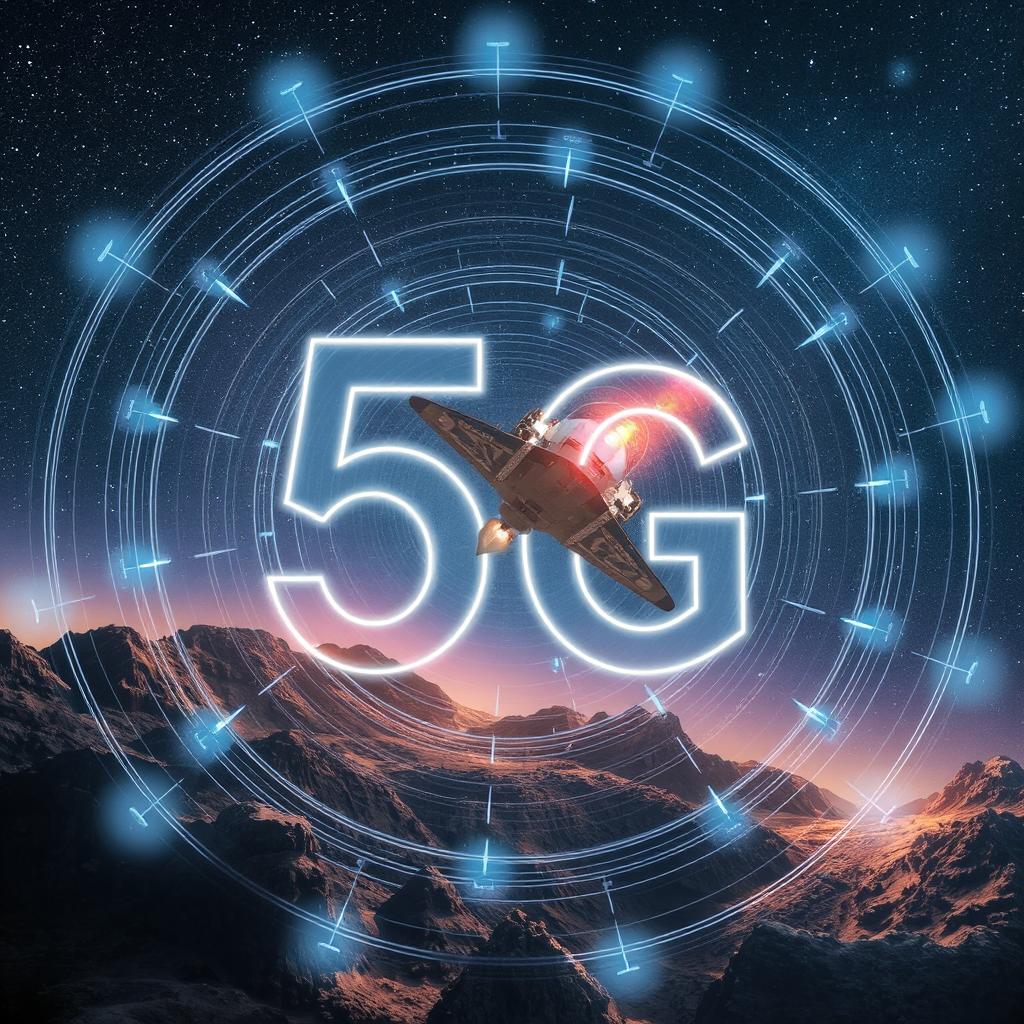In recent years, 5G technology has revolutionized the way we communicate, offering faster speeds, reduced latency, and a more reliable connection compared to its predecessors. One area where 5G is beginning to show significant promise is in space communication. With its advanced capabilities, 5G is poised to enable seamless connectivity between Earth and space, playing a critical role in improving communication for satellites, astronauts, and space exploration missions. In this article, we’ll dive into the applications of 5G technology in space communication, explore its potential impact, and discuss the future possibilities it offers.
What is 5G Technology?
5G, or the fifth generation of mobile network technology, is designed to provide faster internet speeds, lower latency, and greater capacity than the previous 4G LTE networks. It operates on a higher frequency spectrum, which allows for faster data transmission and improved network efficiency. This has opened up new possibilities for real-time applications, from autonomous vehicles to the Internet of Things (IoT). But perhaps the most exciting opportunity lies in its application in space communication.
How Does 5G Technology Work?
5G technology works by using multiple input and output antennas to improve speed and capacity. The technology relies on a combination of frequency bands, including millimeter waves, to deliver faster speeds and more reliable connections. One of the key advantages of 5G is its ability to provide ultra-reliable low-latency communication (URLLC), which is crucial for applications like space communication, where even milliseconds of delay can have a significant impact.
The Importance of Space Communication
Space communication involves the transmission of data between spacecraft, satellites, and ground stations on Earth. Historically, this type of communication has relied on traditional radio waves, which can experience delays and disruptions. However, with the advent of 5G technology, these limitations can be significantly reduced.
Space Communication Challenges
Communicating across vast distances in space presents several challenges, such as signal latency, data transmission delays, and signal degradation due to atmospheric interference. In addition, as the demand for satellite-based internet services grows, the need for a faster, more reliable communication system becomes essential. This is where 5G technology comes into play, offering a solution that can overcome these obstacles and enhance connectivity.
The Role of 5G Technology in Space Communication
With its high-speed, low-latency capabilities, 5G technology has the potential to revolutionize space communication in several key areas. Below are some of the most promising applications of 5G technology in space communication.
1. Improved Satellite Communication
One of the primary applications of 5G technology in space communication is improving satellite communication. Satellites play a crucial role in modern communication networks, providing internet access, GPS services, and weather monitoring. By integrating 5G technology, satellite communication can become faster and more reliable, allowing for real-time data transmission and enhanced services for both commercial and governmental applications.
2. Real-time Astronaut Communication
In manned space missions, maintaining real-time communication between astronauts and ground control is essential for the success of the mission. Delays in communication can lead to potentially life-threatening situations. 5G technology enables real-time communication with minimal latency, which is vital for space exploration and operations, such as remote surgeries or disaster management from space stations.
3. Enhanced Remote Sensing and Data Transmission
Remote sensing involves collecting data from space using satellites and other spacecraft. This data is used for various purposes, such as monitoring climate change, tracking natural disasters, and observing agricultural patterns. With 5G technology, the speed and accuracy of remote sensing can be significantly improved, allowing for more timely and precise data collection and transmission back to Earth.
4. Space-Based IoT Networks
The Internet of Things (IoT) is expanding beyond Earth’s boundaries with the help of 5G technology. Space-based IoT networks can provide real-time data from sensors placed in space to Earth-based devices. These networks can be used for everything from tracking satellites to monitoring space weather. 5G technology enables the seamless integration of these networks, making it easier to manage and utilize the vast amounts of data generated in space.
Future Applications of 5G Technology in Space Communication
The potential applications of 5G technology in space communication are vast, and as the technology continues to evolve, new possibilities are likely to emerge. Below are some future applications of 5G technology in space communication that could shape the future of space exploration.
1. Autonomous Spacecraft
With the advancement of 5G technology, autonomous spacecraft could become a reality. These spacecraft would be able to communicate with each other and with ground control in real-time, allowing for faster decision-making and more efficient space missions.
2. Space Tourism
As private companies like SpaceX and Blue Origin work towards making space tourism a reality, reliable communication will be essential for the safety and comfort of passengers. 5G technology could provide the high-speed, low-latency communication needed to ensure a seamless experience for space tourists.
3. Interplanetary Communication
Looking even further into the future, 5G technology could play a crucial role in interplanetary communication. As humanity explores other planets, such as Mars, maintaining real-time communication with Earth will be critical. 5G networks could help bridge the gap, enabling faster and more reliable communication across the vast distances of space.
Conclusion
5G technology is not only transforming our lives here on Earth but also holds the potential to revolutionize space communication. From improving satellite communication to enabling real-time astronaut communication and expanding space-based IoT networks, the applications of 5G technology in space are numerous. As the technology continues to advance, we can expect to see even more exciting developments in the years to come, paving the way for more efficient space exploration and communication.
FAQs
1. What is 5G technology?
5G technology is the fifth generation of mobile network technology that offers faster speeds, lower latency, and greater network capacity than previous generations.
2. How can 5G technology improve space communication?
5G technology can improve space communication by providing faster data transmission, lower latency, and more reliable connections, which are crucial for satellite communication, real-time astronaut communication, and remote sensing.
3. What are the challenges of space communication?
The primary challenges of space communication include signal latency, data transmission delays, and signal degradation due to atmospheric interference.
4. How can 5G technology be used in space-based IoT networks?
5G technology can enable the seamless integration of space-based IoT networks, allowing real-time data transmission from space to Earth-based devices.
5. What is the future of 5G in space communication?
The future of 5G technology in space communication includes potential applications like autonomous spacecraft, space tourism, and interplanetary communication.




